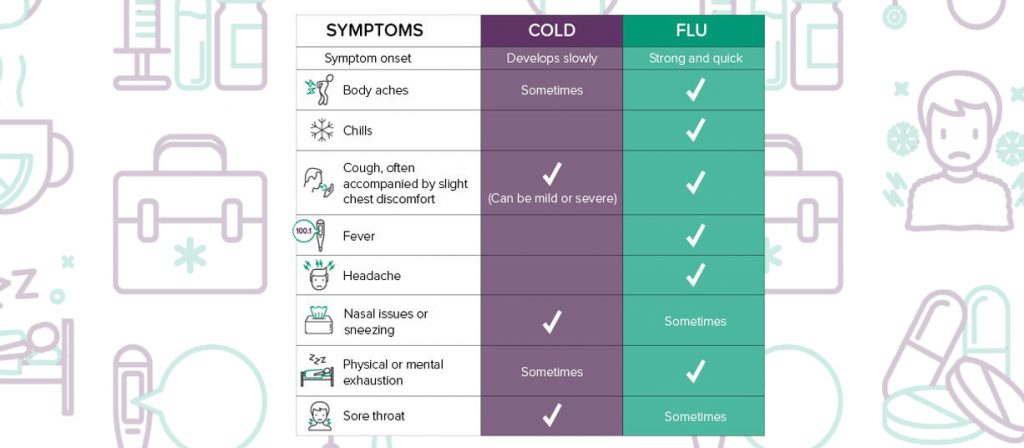How do you know when you have the flu?
Influenza, more commonly known as the flu, can feel a lot like a cold—both illnesses can cause nasal congestion, coughing, body aches and low energy.
However, the flu, a contagious respiratory illness, infects the nose, throat and the lungs. Flu symptoms typically include fever, chills and headache, which rarely occur with a cold. Flu symptoms also usually appear suddenly while cold symptoms develop gradually.
Suspect the Flu? Get Checked Out Now
The flu can be contagious for five to seven days, so the sooner a diagnosis is confirmed, the sooner you can avoid spreading the disease. Prescription medications called antivirals can help lessen flu symptoms and duration, but these drugs are most effective if you start taking them within two days of experiencing symptoms.
Recovery from the flu can take one to two weeks. Rest and drinking plenty of fluids are crucial to recovery, even after you begin to feel better.
“Stomach Flu” Is Not the Flu
Viral gastroenteritis is a condition often referred to as the “stomach flu,” but it is not related to influenza.
Viral gastroenteritis occurs when your intestines become inflamed, most commonly by viruses including norovirus, rotavirus, adenovirus or astrovirus. Symptoms, which are similar to those of influenza, include diarrhea, stomach pain, nausea, vomiting and fever.
If you have viral gastroenteritis, treat the symptoms by resting, staying hydrated and taking an over-the-counter fever reducer as needed. This illness can last as little as a few days or as long as two weeks.
Symptoms that require attention from a doctor include:
- Being unable to keep liquids down for more than 24 hours
- Developing a fever greater than 104 degrees in adults or 102 degrees in children
- Experiencing severe dehydration (dark yellow urine, little to no urine, dizziness)
- Vomiting blood
Sources:
cdc.gov, cdc.gov, cdc.gov, cdc.gov, medlineplus.gov, cdc.gov, cdc.gov, nia.nih.gov, medlineplus.gov, niddk.nih.gov, fda.gov
